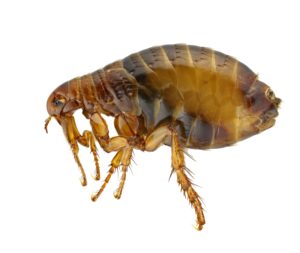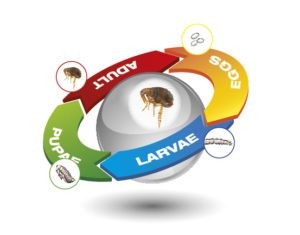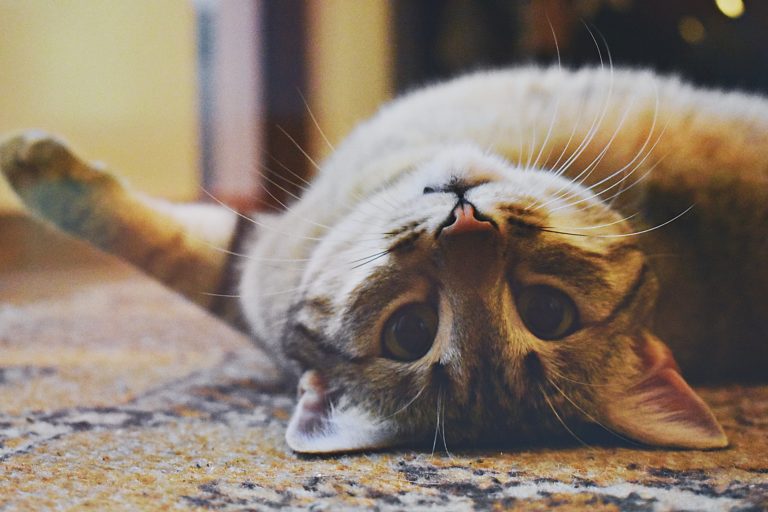Fleas are a menace to your pets and your home.
Where there’s a flea an infestation could quickly follow

Image of an adult flea
Just killing the fleas on your pets is not enough, 95% of the flea life cycle takes place in your pets bedding and home surroundings such as carpets, soft furnishings etc.
To prevent re-infestation, you must break the life cycle. Johnsons produce a range of effective flea control products, including household treatments, some containing IGR (Insect Growth Regulator) which helps to prevent fleas from hatching.
The Flea Problem
Fleas are small, brown, mobile insects which bite the skin and suck blood. They breed rapidly, often unnoticed and can quickly cause a major problem for pets. They can infest your home and will feed on humans.
Fleas & Your Pet
Dogs & cats usually become infested from contact with other animals, including wildlife such as birds, rodents etc. particularly during summer and autumn months. Prompt treatment is necessary as flea bites cause severe irritation and pets often become allergic to flea saliva leading to inflamed skin, sores and loss of coat.
Signs of Flea Infestation
Constant scratching or biting of coat, twitching of back muscles also skin and coat problems. Fleas and flea dirt (tiny black droppings) may be seen when the coat is examined closely or combed out over damp paper, when a small reddish circle will from around the black spots. Flea bites on humans can be seen visual as small red dots 2.5cm 1inch) apart.
Fleas in Your Home
Fleas feed on dogs and cats but spend most of their life cycle in pet bedding, carpets, rugs, furnishings etc. a serious infestation can quickly occur in summer months and even in winter in warm homes with central heating and fitted carpets
Worms
Fleas are carriers of tapeworm eggs and are a major cause of worm infestation in dogs and cats – for more advice on worms please see our Pet Advice section on this website.
Life Cycle of the Flea

In warm conditions the life cycle can be completed in only 3 weeks but may take up to 1 year or more. To prevent re-infestation, it is necessary to break the life cycle which is in 4 stages.
Eggs
50% of life cycle. Hundreds of eggs are laid usually on pets but fall off into carpets, bedding, furnishings etc., where they soon hatch into larvae.
Larvae
35% of life cycle. Larvae feed on organic matter (e.g., from flea droppings) then after a few days spin a cocoon and become pupae, hidden in carpets, furnishings etc.
Pupae
10% of life cycle. May develop into adult fleas in a week but can remain in this stage for many months.
Adult Flea
5% of life cycle. Emerges from its cocoon when temperature conditions are suitable, also in response to vibrations from pets or humans and jumps on to a host (usually your pet) for the first of its meals. Eggs then start to be laid and the cycle begins all over again……





